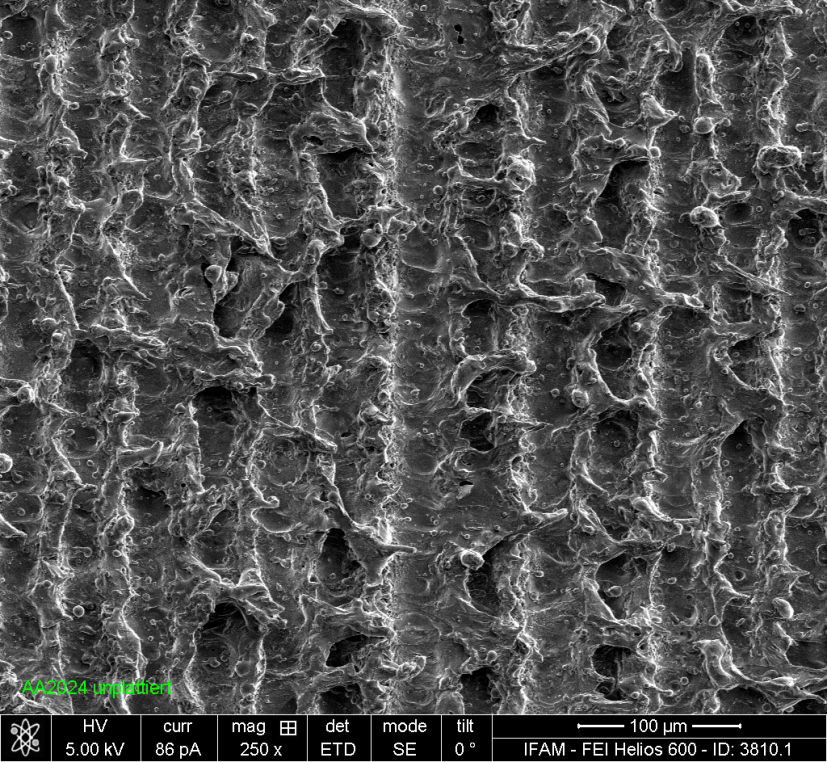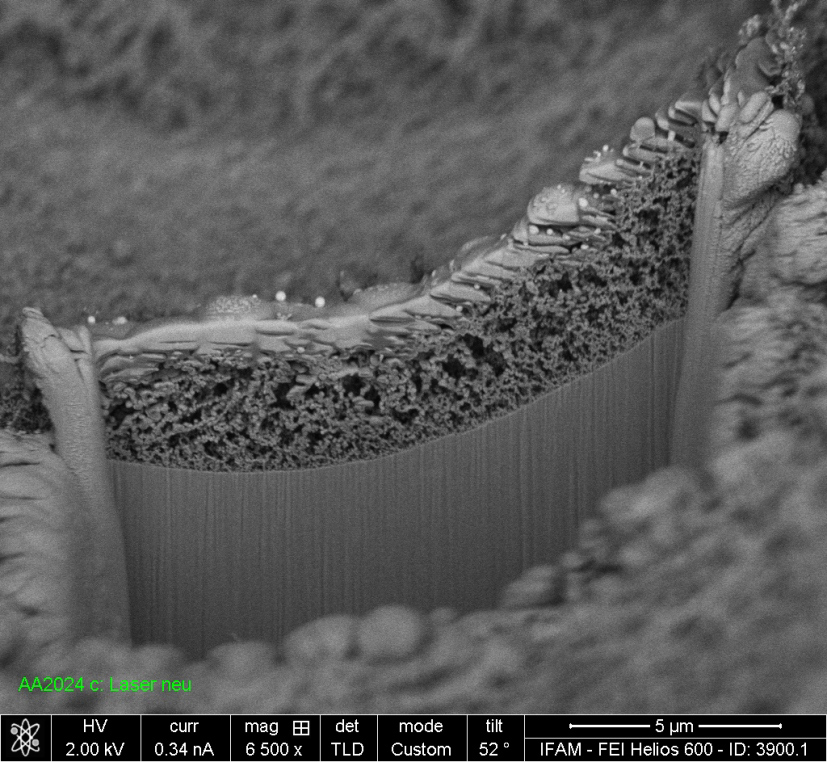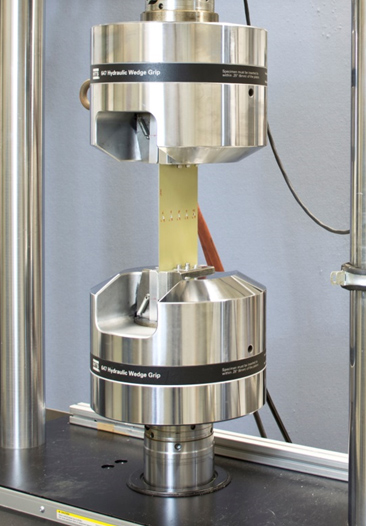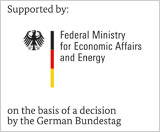Environmentally friendly surface pretreatment with power lasers for manufacturing fiber metal laminates (FML)
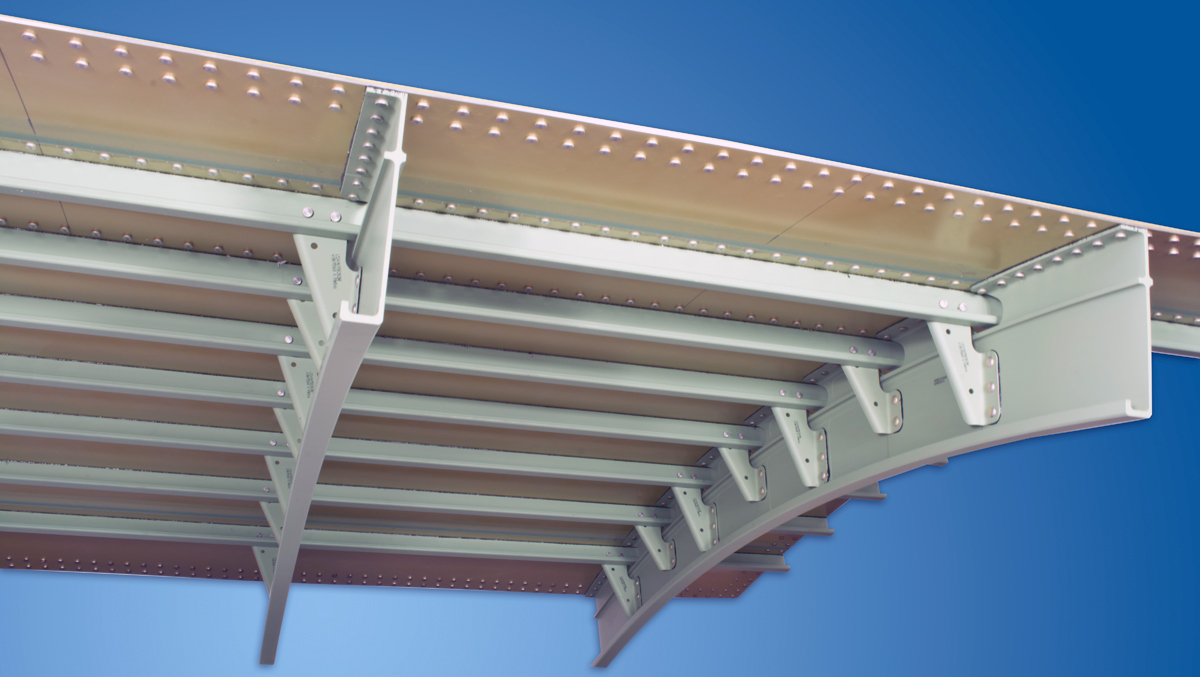
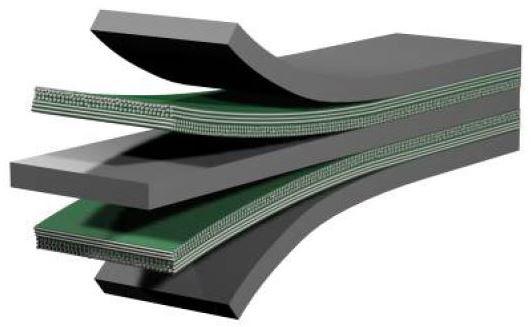
Large-area structuring with high power lasers can replace wet chemical surface pretreatment and at the same time ensures good adhesion for even bonding.
In the aviation industry, FML is regarded as a lightweight construction material with great future potential. It consists of several aluminum and fiber composite layers, each only a few tenths of a millimeter thick. Compared to pure metals, the new material offers not only weight savings but also improved burn-through and impact behavior and, due to the delayed crack propagation, improved fatigue behavior. However, the production of this semi-finished product is hardly automated due to the still very small quantities involved and is therefore both expensive and resource-intensive. As part of an aeronautical research project, Fraunhofer IWS therefore cooperated with other industrial and research partners on basic technologies for automated FML production. Research in Dresden focused on the development of solutions for bath-free surface pretreatment of metal foils using laser technology.
 Fraunhofer Institute for Material and Beam Technology IWS
Fraunhofer Institute for Material and Beam Technology IWS